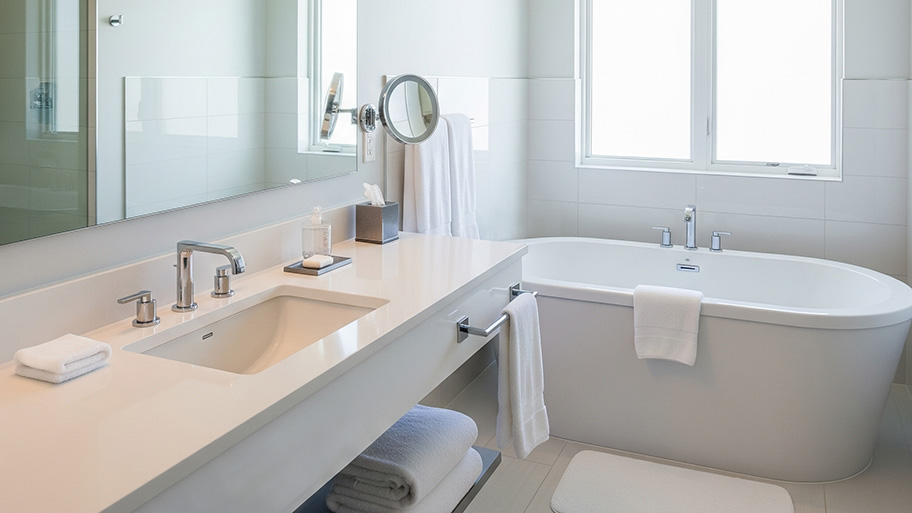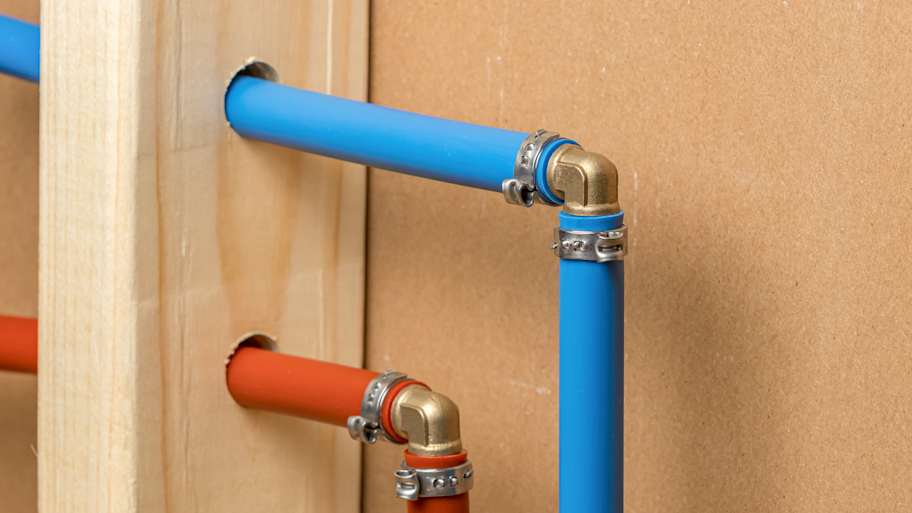
Repairing a main water line is an urgent matter, so use this guide to get an idea of how much main water line repairs cost to act fast.


To accurately calculate the volume of a pipe, you need to know the precise inner diameter of the pipe.
Pipe volume is a handy measurement for calculating flow rates in plumbing systems.
Most residential plumbing and HVAC systems use standard pipe sizes.
Because most pipes are cylindrical, knowing how to find the volume of a pipe is as simple as measuring the diameter and length and plugging those values into a formula. However, for fittings and elbows, additional measurements are necessary. This calculator will help you determine the pipe volume for plumbing systems in your home.
Most household plumbing pipes, such as supply lines, sink drains, or toilet drainpipes, come in standard sizes. This simplifies choosing the correct size for various applications and pipe replacements. The chart below shows the volume in cubic feet for one foot of various sizes of Schedule 40 PVC pipe.
| Nominal Pipe Size (diameter, in inches) | Pipe Volume (cubic feet per linear foot) |
|---|---|
| 1/2 | 0.002 |
| 3/4 | 0.004 |
| 1.5 | 0.014 |
| 2 | 0.023 |
| 3 | 0.051 |
| 4 | 0.088 |
Part of becoming a licensed plumber is learning how to calculate and work with all sorts of pipe materials and the volume, or capacity, of those components.
To calculate the volume of any pipe, measure the inside diameter of the pipe in inches. Divide it by two to get the radius. Square the radius by multiplying it by itself. Now multiply the result by pi (3.14). Multiply that result by the pipe's length in inches to get the volume in cubic inches. Divide the volume in cubic inches by 1728 to determine the volume in cubic feet.
Pipe Volume (cubic feet) = Radius squared x 3.14 x Length / 1728

If you're trying to determine the volume of a pipe for which you can't access the inner diameter, such as when planning to replace a main water line that's active, you'll need to take a different approach.
Measure the circumference of the pipe in question and calculate the inner diameter as closely as possible by dividing the circumference by pi, or 3.14. Now you can use the diameter figure to complete your calculations.
When you measure the length of pipe you're calculating for, the simplest method is to measure in feet and divide the total by 12, and work your calculations in inches.
To measure the volume of pipe fittings, such as tees and wyes, treat each section of the fitting as its own calculation. Add the values of the parts to obtain the total fitting volume. For reducing fittings, average the large and small diameters for the diameter value.
Calculating pipe volume is essential for installing or repairing the plumbing in your home as a DIY project. However, most homeowners leave this sort of work to the pros. A local plumbing company will have detailed knowledge of the municipal water system in your location, resulting in more accurate calculations based on your needs.
From average costs to expert advice, get all the answers you need to get your job done.

Repairing a main water line is an urgent matter, so use this guide to get an idea of how much main water line repairs cost to act fast.

A main water shut-off valve controls water flow for your entire home. Here we break down the cost to replace a main water shut-off valve.

This guide to toilet installation cost covers what you can expect to pay when adding a new toilet to an existing or new bathroom.

Learning about the different parts of your bathtub plumbing system is useful when you need to repair or replace a component. This guide has all of the parts covered.

Having the right size PEX pipe is a must for your plumbing project. Learn about PEX pipe sizes and dimensions so you can choose the right one for your project.

Most homeowners will eventually need to replace bathroom hardware. This guide breaks down bathtub faucet installation costs, so you can upgrade your bathroom.